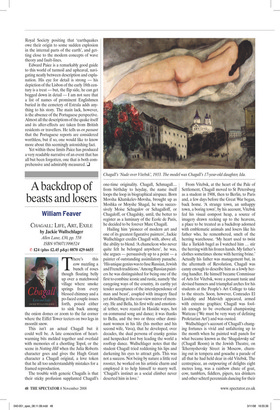Ten minutes that shook Europe
Judith Flanders
WRATH OF GOD: THE GREAT LISBON EARTHQUAKE OF 1755 by Edward Paice Quercus, £20, pp. 304, ISBN 9781847246233 ✆ £16 (plus £2.45 p&p) 0870 429 6655 Portugal in the 18th century was at once a mystery and deeply familiar to the British. Deeply familiar, as one of Britain’s most enriching trading partners, providing Brazilian gold in exchange for British textiles and other manufactured goods. A mystery, because Portugal appeared to be hundreds of years behind the rest of Europe. The Jesuit control of the country forbade ‘any conclusion whatsoever opposing the system of Aristotle’; superstition was rampant (the Spanish derided their neighbours as pocos y locos — few and mad) as the Inquisition searched out not only heretics but bigamists, witches, Jews, sodomites and other undesirables, while the patriarchs of the church frequented (or owned) brothels, collected pornography or merely visited their nun-mistresses. Yet into this quasi-medieval world, on All Saints’ Day 1755, came crashing an event that was in retrospect to be seen as one of the precipitating events of the Enlightenment, the herald of modernity. The earthquake that struck that morning is still the most powerful ever known in western Europe. It lasted perhaps ten minutes, has retrospectively been measured at nine on the Richter scale, and unleashed the same day a tidal wave that wiped out much of the harbour area of town, and set off tremors that were felt in Hamburg, in Cork and even on Loch Lomond, where the water suddenly lurched upwards. Its effects covered an area of six million square miles — twice the size of Australia.
In Lisbon itself it took more than half a decade just to clear the rubble, piled two stories high, from some of the streets. The royal family lived first in a tent, and for another year in a make-shift structure in the park of one of the palaces. But at the same time this literal shake-up was the harbinger of modernisation, political and economic. At home, it was spearheaded by the king’s right-hand, Carvalho e Melo (better known to posterity by his later title of the Marqués de Pombal); and throughout Europe it gave rise to a series of publications that heralded a new direction in both science and philosophy. At an end was the old Leibnizian theodicy, replaced by Voltaire’s scorching Candide: in Lisbon Candide is injured by falling masonry, while a sailor ‘braves death’ in order to loot, drink and buy up the services of a prostitute as the wounded call out for help around him. A staggering 17 editions of this parable appeared in 1759 alone, highlighting the receptiveness of the public. More slowly, the scientific community too began to investigate the earthquake, gradually moving from the notion of God’s wrath to ideas of an impersonal natural world. In 1760 John Michell presented papers to the Royal Society positing that ‘earthquakes owe their origin to some sudden explosion in the internal parts of the earth’, and getting close to the modern concepts of wave theory and fault-lines.
Edward Paice is a remarkably good guide to this world of turmoil and upheaval, navigating neatly between description and explanation. His eye for detail is strong — his depiction of the Lisbon of the early 18th century is a treat — but, the flip side, he can get bogged down in detail — I am not sure that a list of names of prominent Englishmen buried in the cemetery of Estrala adds anything to his story. The main lack, however, is the absence of the Portuguese perspective. Almost all the descriptions of the quake itself and its after-effects are taken from British residents or travellers. He tells us en passant that the Portuguese reports are considered worthless, but if so, one would like to know more about this seemingly astonishing fact.
Yet within these limits Paice has produced a very readable narrative of an event that has all but been forgotten, one that is both comprehensive and admirably measured. q



















































































 Previous page
Previous page